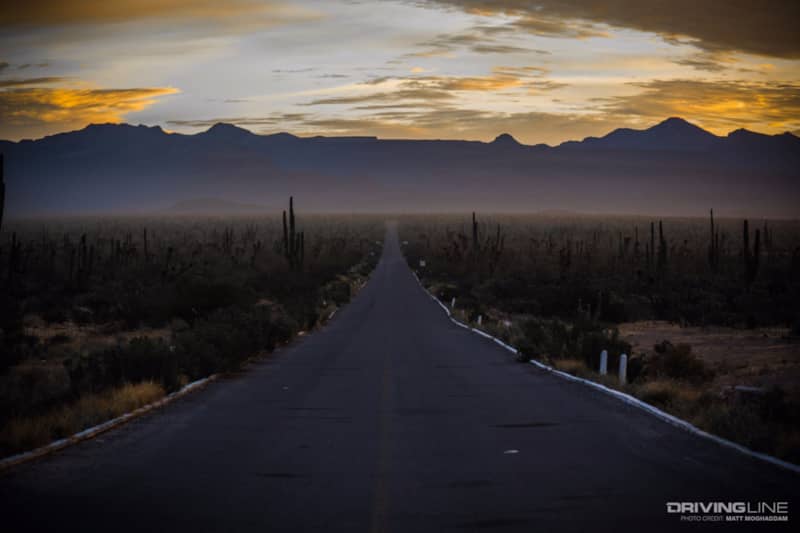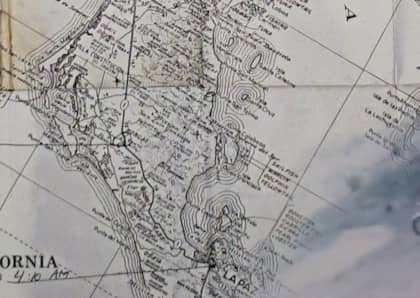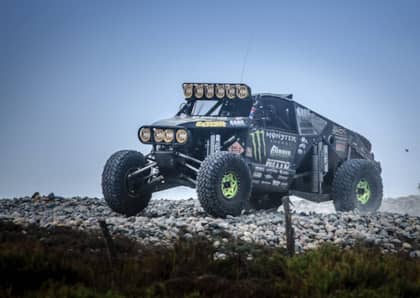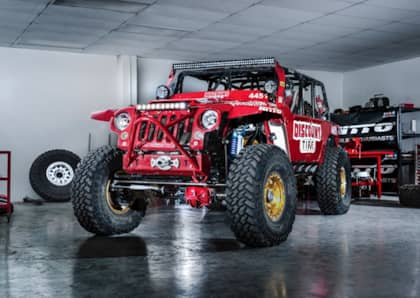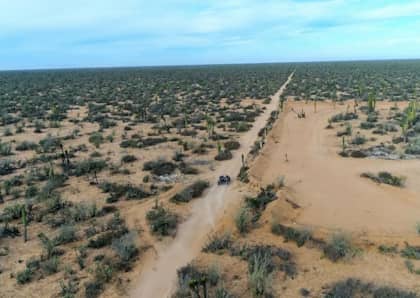Chasing Baja: The 50th Year of the Most Iconic Battle Between Man and Machine
It’s a place that defies everything we know. Where time seems to disappear, days blend together and death lurks around every corner. But something about Baja gives it an immense gravity that keeps pulling thrill-seekers back. Veteran racers speak about it like it’s legend, describing how everything down there is connected in some way or another. They call it “Baja Magic”, a spirit of its own that brings hundreds of thousands of people together each year to bear witness to the greatest test of man-versus-machine through 1000 miles of the most grueling terrain on the planet.
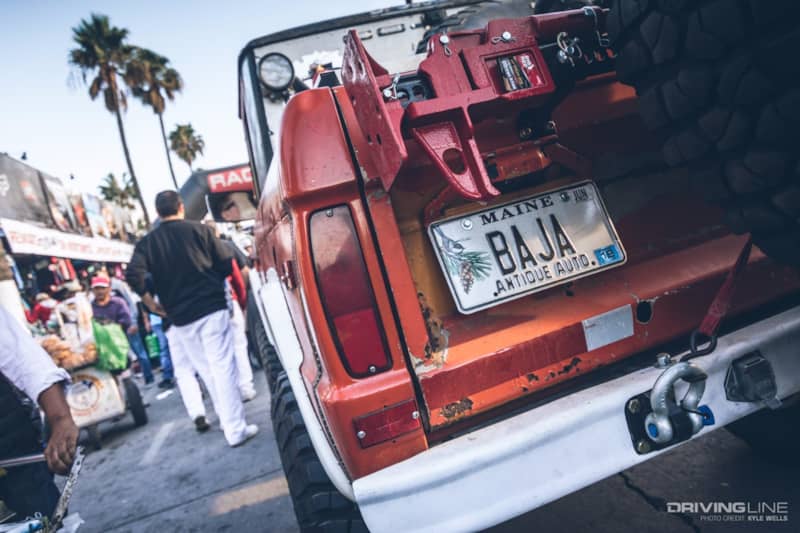
This year marks the 50th Baja 1000 race, beginning in Ensenada along the Pacific coast. Beginning in 1967, the Baja 1000 has attracted adrenaline junkies from all walks of life to test their skills and stamina either behind the wheel, or on a motorcycle. Since its inception, many celebrities and famous motorsports icons have tried their hand at the Baja 1000, including Steve McQueen, James Garner, Clark Gable, Parnelli Jones, Chip Foose and Ted Nugent to name a few. Although different every year, the 50th Baja 1000 course makes its way down the Baja Peninsula, crossing from coast to coast several times before finishing in the city of La Paz along the Sea of Cortez. This year, the course itself is just over 1,130 miles long—varying in terrain including paved roads, mountain trails, sandy beaches and dry lake beds.
But Baja isn’t just about the competition. In fact, it’s a rather small part of a big picture. Off-roading is a way of life for many of the locals, with generations of Mexicans growing up around these races and showing their children what Baja racing is all about. It would be difficult to walk into any local business throughout the entire peninsula and not find a trace of off-road racing on the walls. Many businesses embrace the way of life, as this popular off-road destination continues to attract thousands of tourists throughout the whole year.
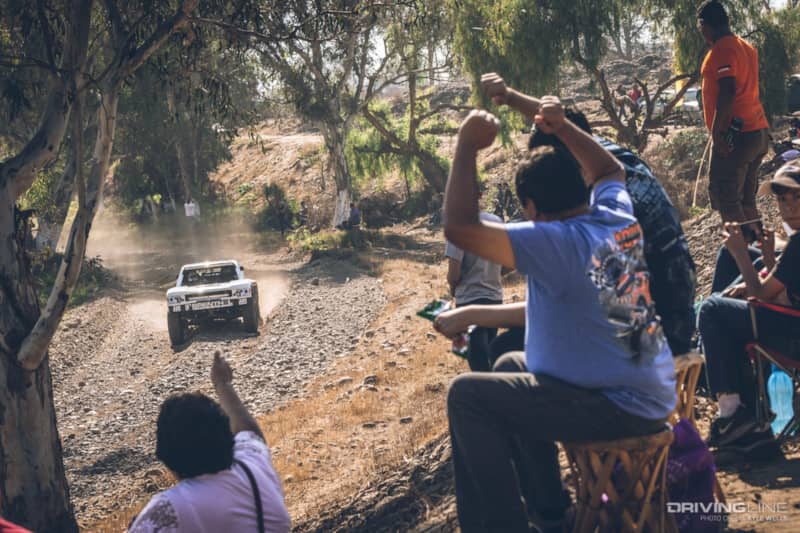
In the two days prior to the race, SCORE International holds a race contingency in the heart of downtown Ensenada. It’s an all-out party, and everyone is invited as the anticipation for the race builds. The streets are blocked off to vehicle traffic, vendors from all over the world set up their booths along the staging lanes and start line, encouraging the public to get a piece of the action as each Baja racer drives their vehicle through tech inspection. The air is filled with the scent of fresh churros, roasted corn and taco stands. This tradition is an important part of the race, as it gives fans a chance to see their favorite race vehicles up-close and even get a photo-op with the drivers. It brings the whole experience together, displaying just how deeply ingrained off-road racing has become within the local culture.
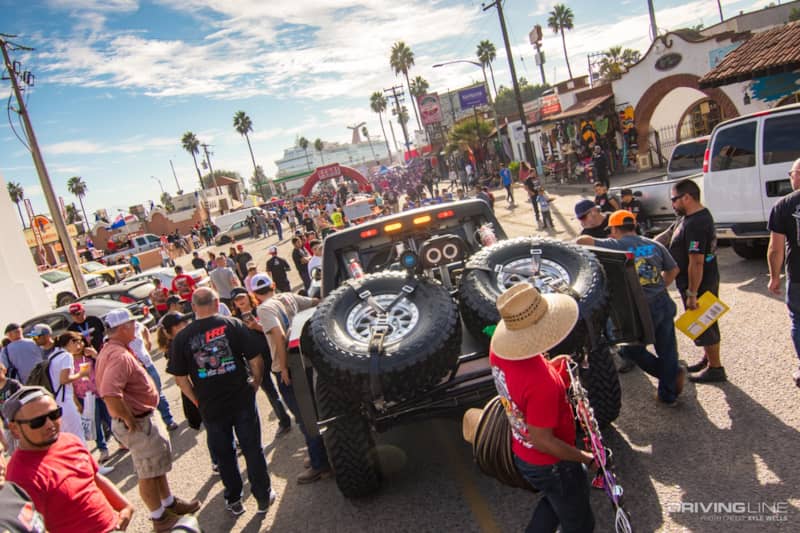
The Baja 1000 attracts more than just the big name Trophy Trucks and Class 1 teams. Everything from old-school Jeep CJ’s to bone-stock VW Beetles can be found in the contingency line. This year’s race included over 400 vehicles, each in their respective class. One class that is recently making big waves in Baja racing is Ultra 4, or the Hammer Truck Unlimited class, as it’s called by SCORE.
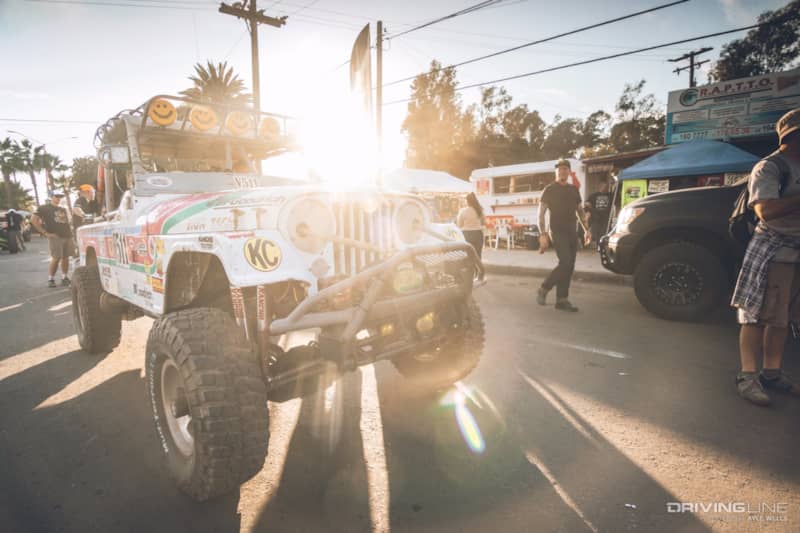
Perhaps the most well-known racing family in Ultra 4, the Campbells, couldn’t pass up the chance to combine their efforts towards winning the Baja 1000 this year. Shannon, Wayland and Bailey Campbell brought their 4405 Ultra 4 car through tech inspection, and had a strong start to the race. The IFS 4-wheel drive combined with the 40-inch Nitto Trail Grapplers on the 4405 car is well suited for the fast desert terrain of the Baja 1000 course. Although the Campbells are known for being strong finishers with a reputation of many Ultra 4 wins, including a 1st place finish in the 48th SCORE Baja 1000, unforeseen mechanical failure would cause them to end their race early.
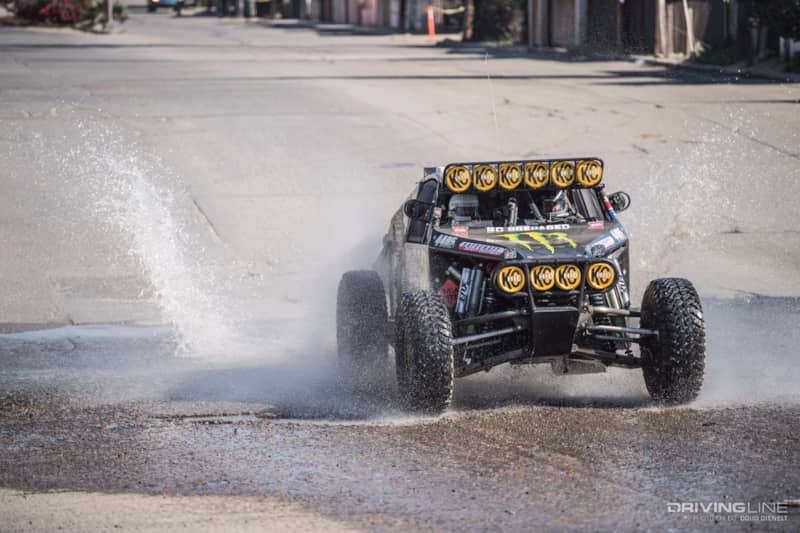
Dave Cole, a name synonymous with Ultra 4 racing, also entered his bid for the 50th SCORE Baja 1000. Dave, who is the co-founder of Ultra 4 and King of the Hammers, entered in a newly built race car, based on a Trent Fabrication chassis. Most newly built race cars are prone to bugs that need ironing out, but Dave and his team seemed to have the 4454 car dialed from the get-go.
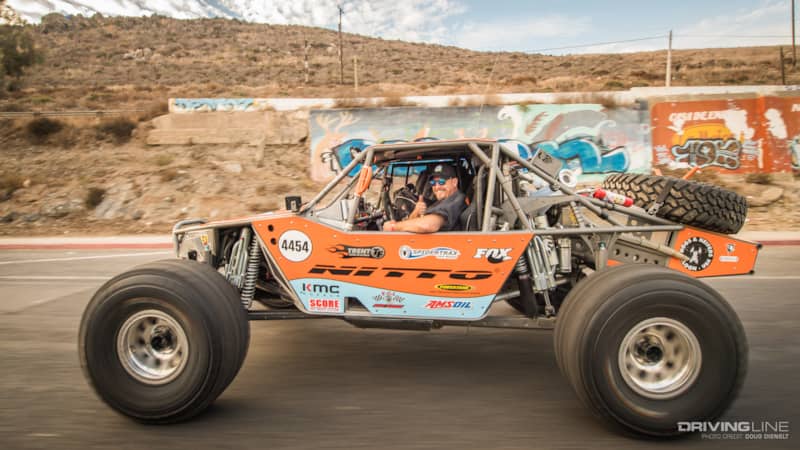
Not all the Unlimited Hammer Truck cars feature custom tube chassis and one-off components. Mel Wade from Off Road Evolution also entered the ranks with his EVO1 car, which retains a Jeep JK frame, Dynatrac axles, a built Hemi, Nitto 40x13.50x17 Trail Grapplers and off-the-shelf EVO MFG suspension components. The 4451 car was stripped down to its bones and completely prepped for the 50th Baja 1000 just weeks before the race. EVO1 is no stranger to racing, and has finished the Baja 1000 in years past.
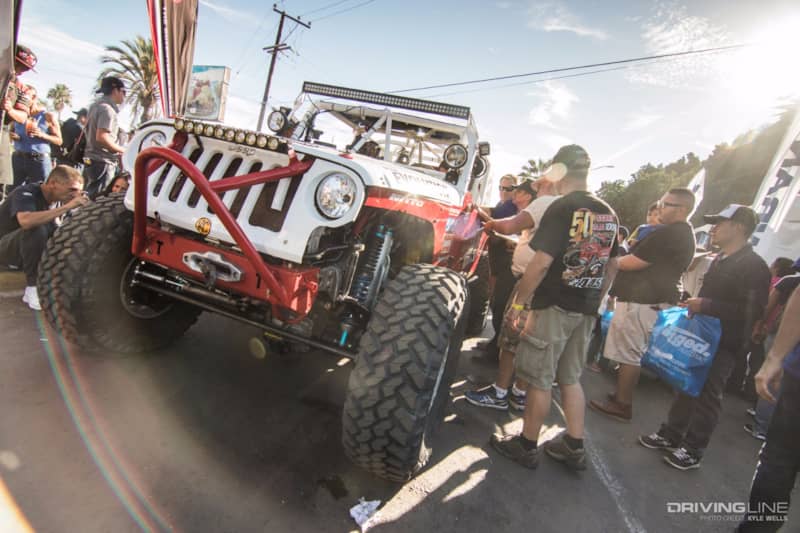
This summer, we got a chance to ride with Off Road Brands for the 65th Annual Jeeper’s Jamboree on the Rubicon Trail. Father and son team, Ron and Austin Stobaugh, are Jeepers at heart, but another aspect of Off Road Brands is their signature Desert Race School, where they offer classes to get students started in desert racing. Ron is no stranger to Baja either, having been involved in Baja racing since the early 90s. His extensive knowledge of the peninsula, combined with years of race logistics experience, make Ron an excellent team leader for this race. Ron, with his son Austin, have partnered up with Mike Jams to build and race a Class 3000 truck, also known as a BajaLite.
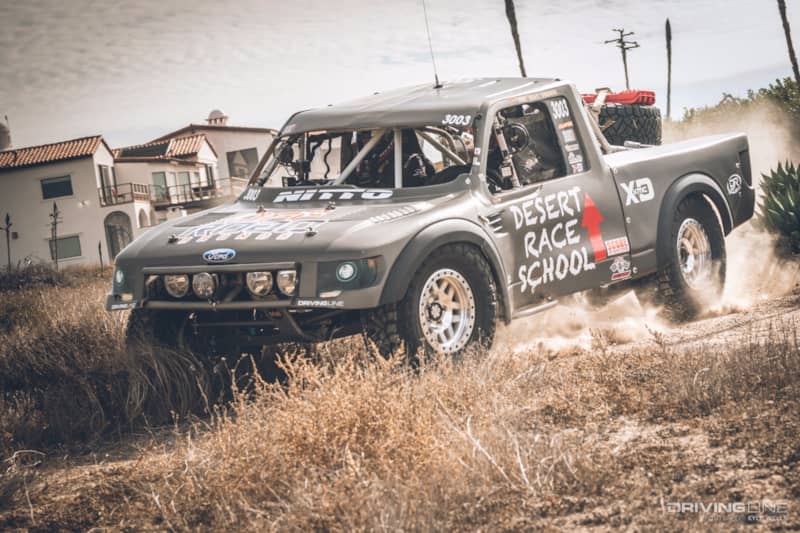
In the weeks leading up to the Baja 1000, the Desert Race School team was busy prepping their 3003 BajaLite car while squeezing in as much prerunning as they could on the race course. The team’s plan to have four drivers and co-drivers made the most sense, dividing up the race into four sections.
Among the driver list is KOH King Loren Healy, with Chris Corbett from Nitto as his navigator. No stranger to desert racing, Loren Healy still had some adjusting to do to get used to the rear-wheel-drive, 4-cylinder BajaLite on 35-inch Ridge Grapplers. A big change from his V8, four-wheel-drive Ultra 4 car—nonetheless, by Wednesday before the race, the 3003 car was fully prepped, tech inspected and ready to take on the 1,130 miles to La Paz.
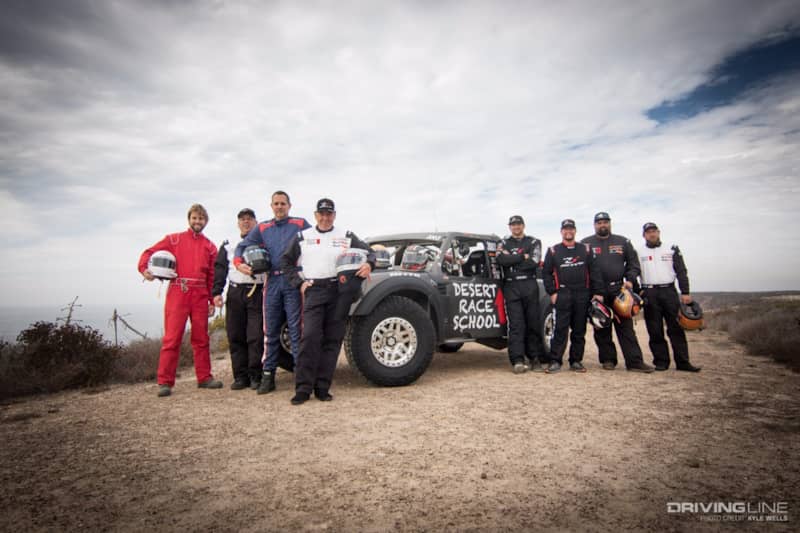
On Wednesday night, the nerves begin to kick in for the 4-wheeled vehicle teams. The running joke of “try to get some sleep tonight” is all-too real the night before a race as physically and mentally demanding as the Baja 1000. But at the same moment these drivers are staring blankly at the ceiling of their hotel rooms in Ensenada, the first green flag for the bikes and quads is dropped. The bikes and quads take off a full 10 hours before the first Trophy Truck leaves the start line, challenging riders to complete the first half of their race in the dead of the night—through some of the darkest desert skies in the Western Hemisphere.
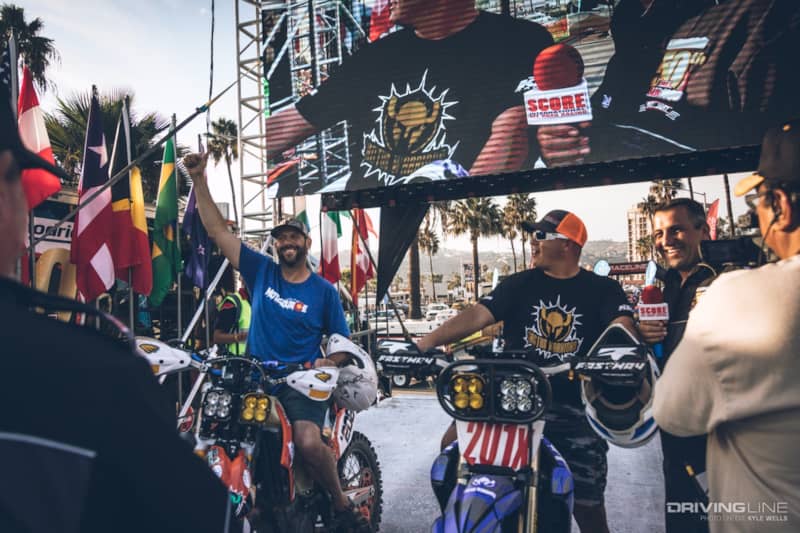
Later on Thursday morning, the air is electrified in downtown Ensenada. It almost seems like the entire city drops everything and heads to the start line. Thousands of fans, both locals and those from all over the world, line up along the first few miles of the race course, waiting anxiously for that first green flag to drop for the Trophy Truck class.
Business owners close shop, kids ditch school for the day, even some of the elderly fans find their way down to witness the action for themselves. And who could blame them? 900 horsepower, 3 feet of suspension travel, chase teams that require the use of helicopters—it’s the stuff of dreams, and for many, the only opportunity they will ever have to see a trophy truck fly by in real life.
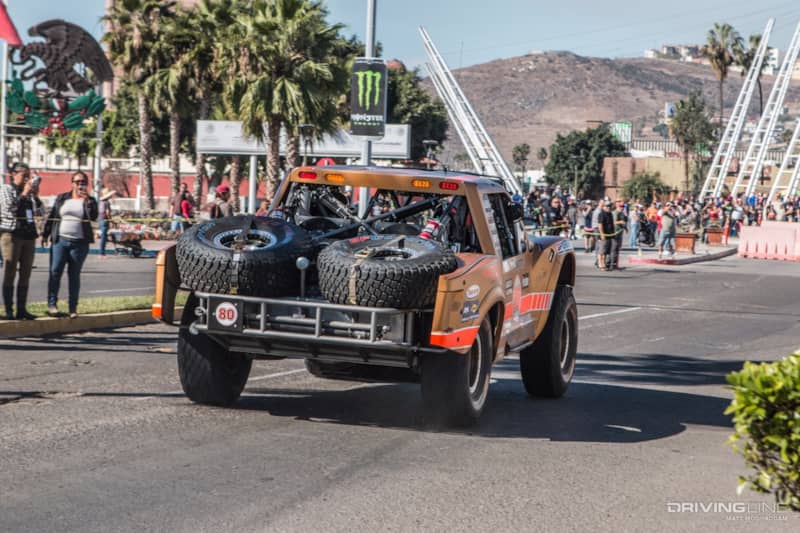
At 10:00 am Thursday, 1st-place qualifier and veteran Baja 1000 winner, Robby Gordon, hurled his Speed Energy trophy truck off the start line. With a mighty roar, followed by the bark of fresh tires sliding on asphalt, the 50th SCORE Baja 1000 had begun. After the trophy trucks cross start, their open-wheeled, rear-engine counterparts, Class 1 racers, begin the race. While not as fast as a TT through the bigger bumps, Class 1 cars are proven in their own ranks as the fastest buggies on earth.
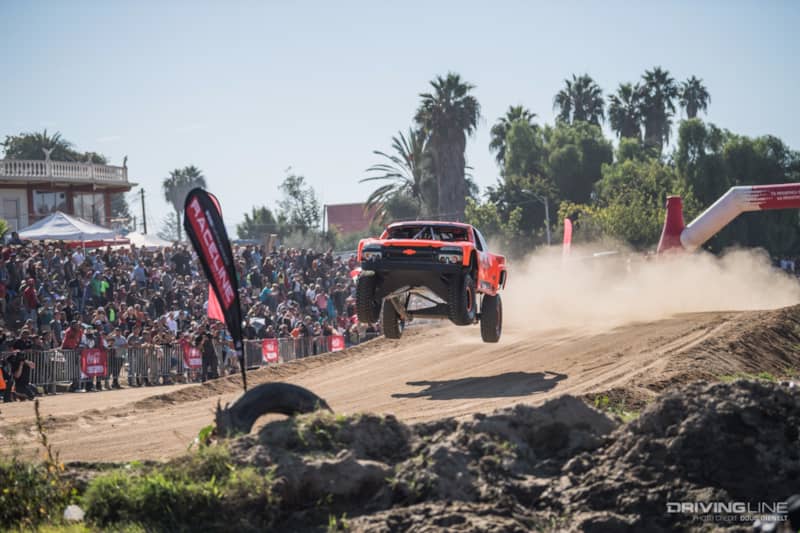
One-by-one, each racer took off from the start line along the coast of Ensenada as the green flag dropped every 30 seconds. The beauty of this iconic race has always been held in the hearts of Baja racers. No matter what car they are driving, the passion, love and hard work remains unwavering between all classes.
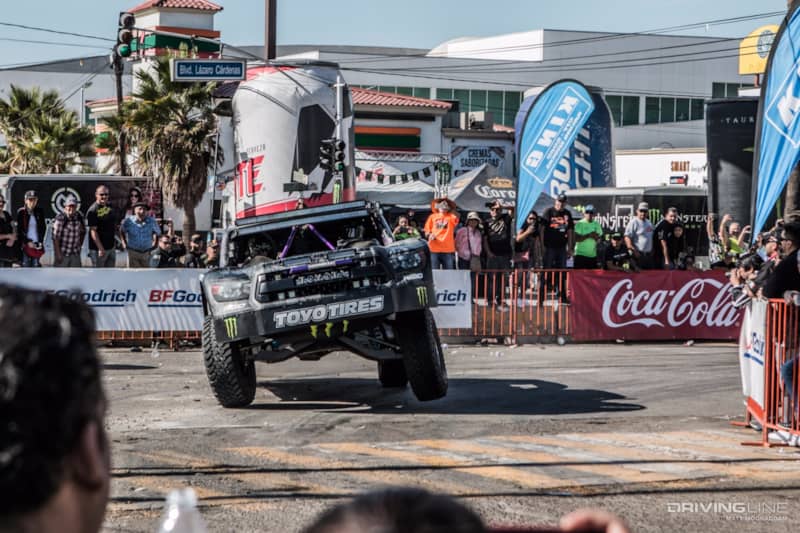
By the early afternoon, all 400 vehicles entered in the race were underway. From the start line, the race course makes its way into the Arroyo Ensenada wash before jumping back onto the surface streets and heading out of town.
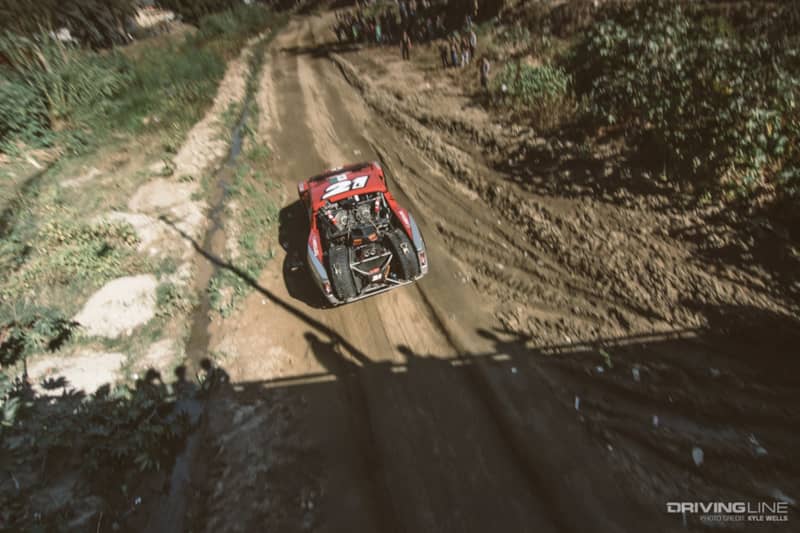
But this wasn’t the only race out of Ensenada on Friday morning. As each team made their way onto the race course, their respective chase trucks began their own race southbound on Mexico’s Highway 1, heading for their remote pit stops further down the peninsula. Chasing the Baja 1000 is no easy task. As treacherous as the race course is, the highways can be just as dangerous. While most small cars can navigate them with little difficulty, a full size dually chase truck with a service body, loaded down with tools, parts and the chase crew can be quite a challenge to navigate through the narrow and windy roads of Baja.
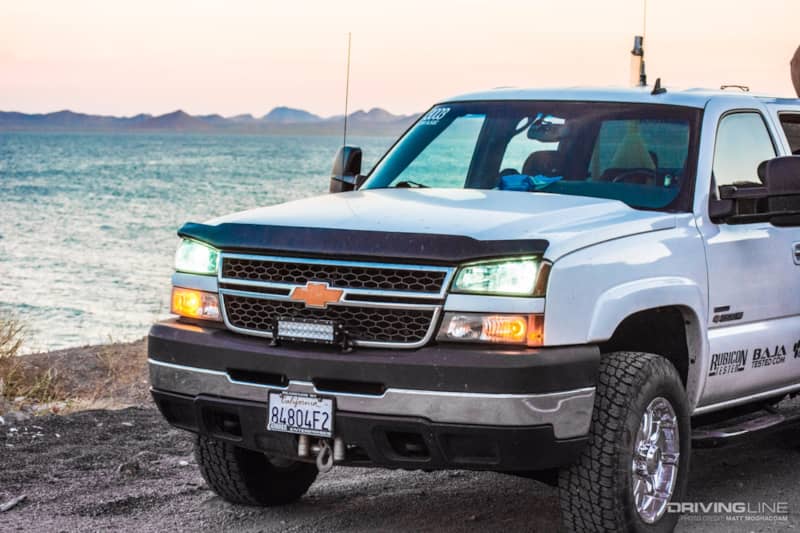
Most of Highway 1 is a two lane road, with very few passing zones. The most common method of delivering goods to the southern cities of Loreto, La Paz and Cabo San Lucas is by truckload, which is why you will run into more semi-trucks in Baja than local traffic. And there’s no worse feeling than being stuck behind one through a stretch of road too dangerous to pass on, all the while, knowing your race car is charging at full speed to receive fuel and assistance at the pit stop you’re responsible for. Combine all of that with dense fog, complete darkness, potholes the size of VWs and a severe lack of sleep—it quickly becomes the stuff of nightmares.
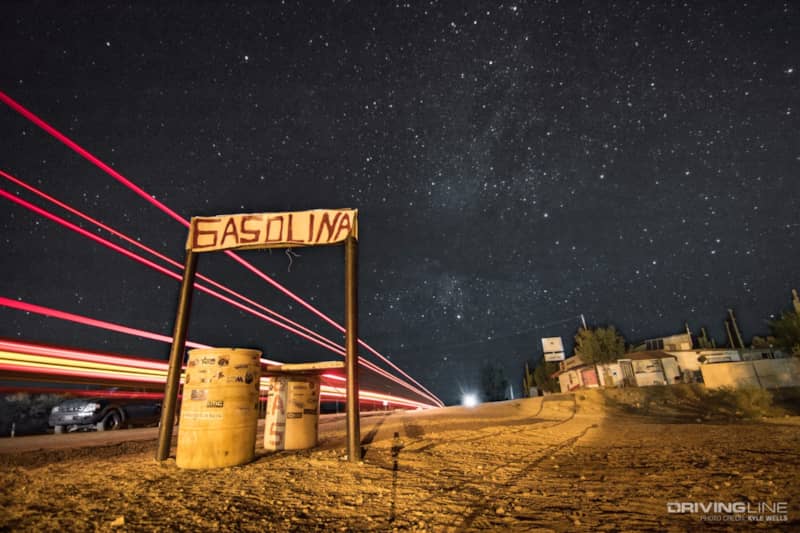
As darkness falls in the late afternoon, Desert Race School co-driver, Shannon Boothe, flips the switch to fire up the front lights of the 3003 car as driver, Mike Jams, keeps his pace across the peninsula towards their next pit stop and driver change. Race mile 311 on the map marks Coco’s Corner, a place that is difficult to describe without being there and could only exist in Baja.
This small patch of land, decorated by everything and anything that is left behind by passersby, is owned by a man known as Coco, who wears a prosthetic leg and has a reputation for aiding Baja racers and off-road enthusiasts who pass by. This is where Mike and Shannon will exit the 3003 BajaLite, and pass the torch to the next driver and co-driver of the Desert Race School lineup.
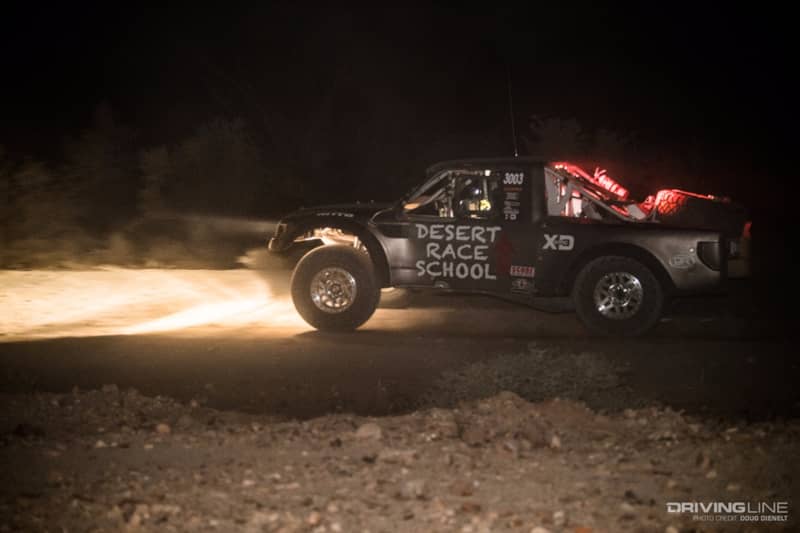
Coco’s Corner is far from any paved roads, making the chase team’s journey into the pit area particularly challenging. By nightfall, the lights from chase teams hustling up and down the dirt road into Coco’s could be seen from Highway 1, extending beyond the horizon. Navigating this road at night feels like something you would see in a Mad Max movie. Hundreds of big trucks moving fast, followed by enthusiastic locals in sedans and minivans lined this stretch of road, passing each other with little visibility in the heavy dust.
At the end of the road, a line of pits can be seen extending in each direction along the official race course. The Desert Race School pit had made radio contact with the 3003 car, just as Mel Wade passed in his Ultra 4 Jeep heading into his pit for fuel. Word also came in that Dave Cole passed through earlier in the 4454 Ultra 4 car.
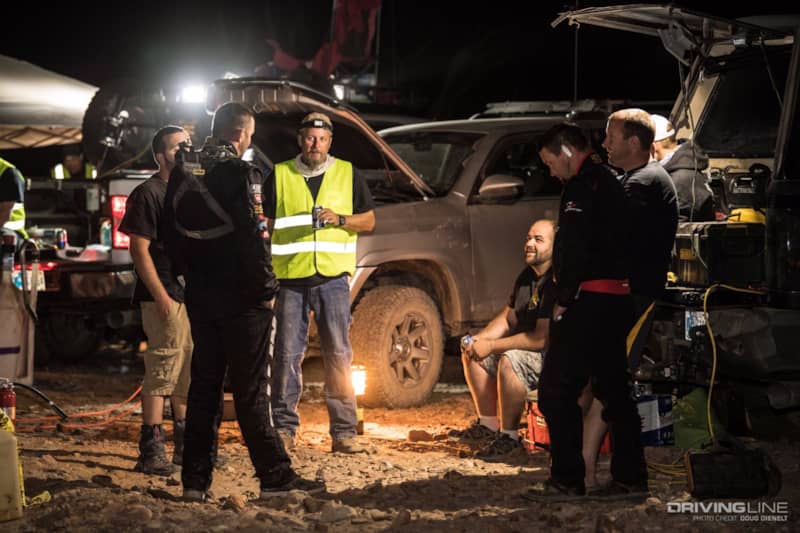
At roughly 10:30pm, the BajaLite arrived at the pit stop. As Mike and Shannon unbelted and climbed out, the pit team refueled the car, checked the chassis, suspension and tires for anything out of the ordinary. Shannon Booth, who is a veteran Baja Racer with decades of experience under his belt, described the last hundred miles of race course as some of the most brutal he has ever seen. The lack of wind meant the dust was settling on the course instead of blowing off of it, forcing a slower pace with the low visibility.
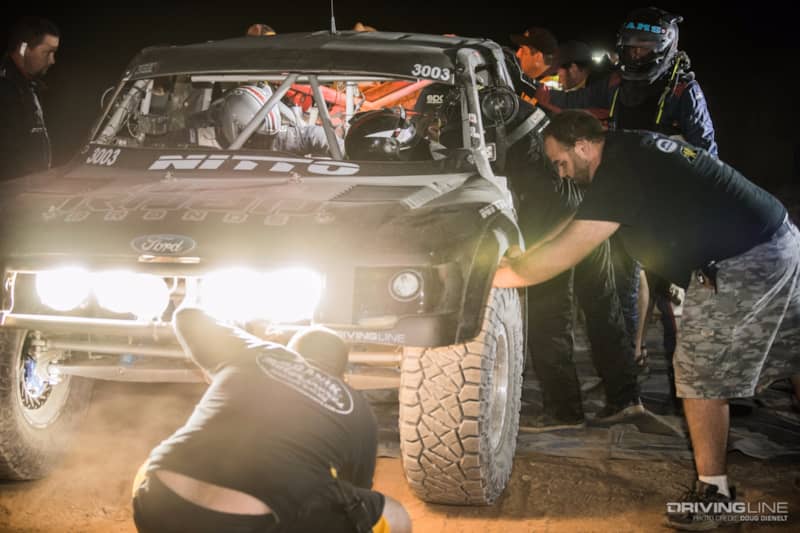
The good news, however, was that the BajaLite was performing perfectly, and no issues were reported. This was especially well received by Loren Healy, who was the next driver for the Desert Race School team. He and his co-driver, Chris Corbett of Nitto Tire, settled into their seats and strapped in to take the BajaLite over 300 miles south to San Ignacio where they would end their leg of the race. The signal was given that the pit stop was completed, and just like that, they disappeared into the dust.
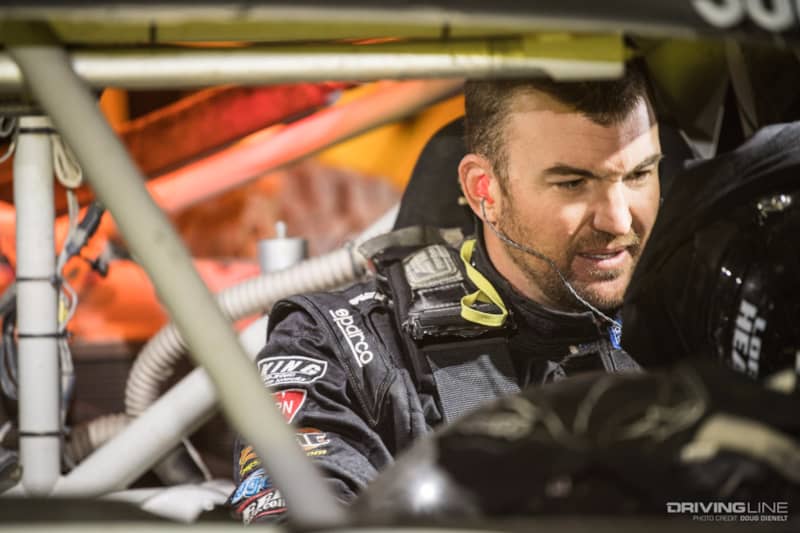
Coco’s corner was slowly emptying out. Once again, the chase trucks took off, making their way through the dust back to Highway 1 to continue down the peninsula. The race course was fast in this section, so keeping a good highway pace of about 75mph was mandatory for the chase vehicles to catch the race car at the next pit.
But the next stretch of highway to the state line of Baja California Sur was especially demanding. As the early morning hours went on, a dense fog descended upon the Baja desert, engulfing both the highway and the race course in what seemed like zero visibility. Still, the chase trucks pushed on, through the military checkpoint just outside Guerrero Negro, and into the Mexican state of Baja California Sur.
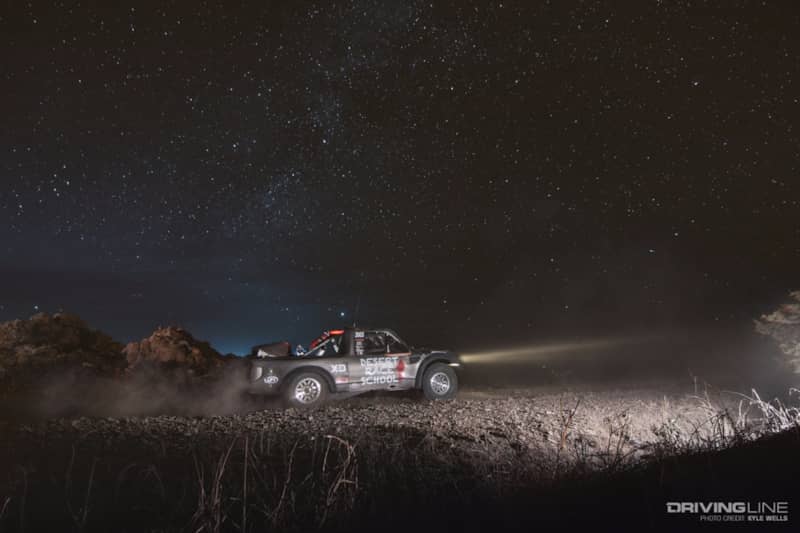
The fog grew thicker as the night went on, eventually requiring windshield wipers just to see 10 feet ahead. Running on no sleep and all adrenaline, chase crews finally reached the next pit stop in Vizcaino—a point along the race course that actually crosses Highway 1. Naturally, this point of the race was saturated with chase teams and spectators alike, making it incredibly difficult to find anyone who didn’t have a radio.
Five minutes after the chase team arrived to meet up with the crew already stationed in Vizcaino, the 3003 car made radio contact. They were 3 miles from the pit, running great and requiring fuel only—good news. As the BajaLite pulled into pit, dozens of flashlights were aimed on it, checking for anything they could find that could become an issue. The 35x12.50x17 Nitto Ridge Grapplers really showed their strength, as the tires were in great shape and gripping the Baja race course with ease. The 3003 car was in 1st place, positioned ahead of all other BajaLites in their class. After fueling up and a quick pep talk, Loren and Chris headed back onto the race course, not knowing the most feared monster in all of Baja racing was waiting for them just 6 miles ahead.
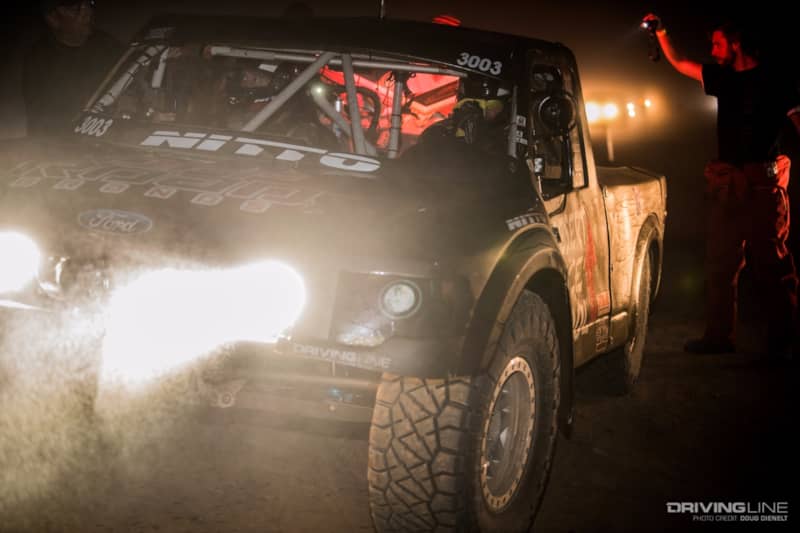
Of course, we’re talking about silt. Silt is difficult to describe to someone who has never been physically buried in it. It’s finer than baby powder, thicker than dust and will find its way into any crack or crevasse. It is usually several feet deep, nearly impossible to dig out of and will bury a race car to its chassis within seconds. It’s the boogeyman of desert racing, striking fear into the hearts of those who have fell victim to it before. Worst of all, nobody is immune to silt. It will gobble up Trophy Trucks just as fast as a Class 11 Volkswagen. The only way out of a deep silt bed is to stay on the throttle until you’ve passed it.
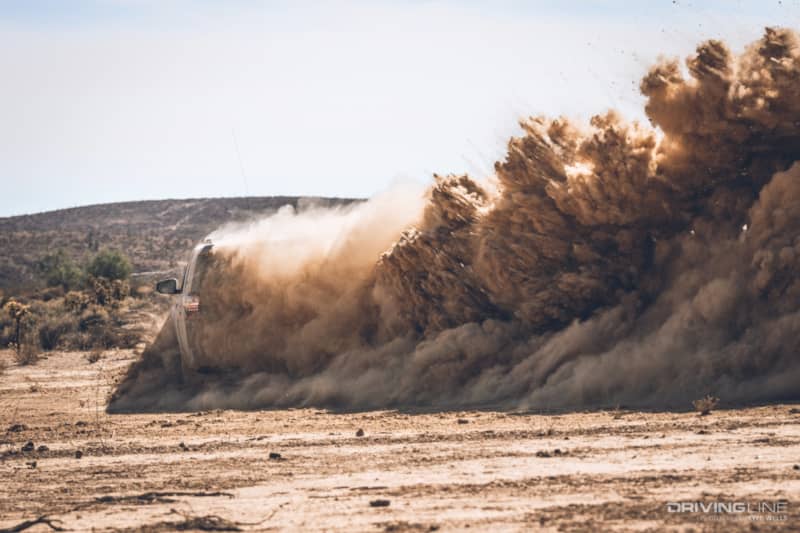
Just 10 minutes after the 3003 car left the pit stop in Vizcaino, a radio distress call came in from Chris Corbett...
Dense fog and silt combined can create blackout conditions—moisture on the headlights gets hit with the silt, turning the water droplets into mud that covers the entire headlight lens. With no front lights, Loren and Chris found themselves buried in a silt bed, along with several other race cars—all immobilized. Being just 6 miles from the highway, the Desert Race School chase team sprang into action, taking a Jeep JK-8 chase truck onto the race course to pull the BajaLite out. Chase vehicles on the race course are never ideal, especially in this section of course which is lined by giant Cardon cacti, thick fog and no room for a race vehicle to pass. Nonetheless, the chase team was able to reach the race car, pull them out of the silt and make it back to the highway just as the first rays of sunlight crept beyond the mountains.
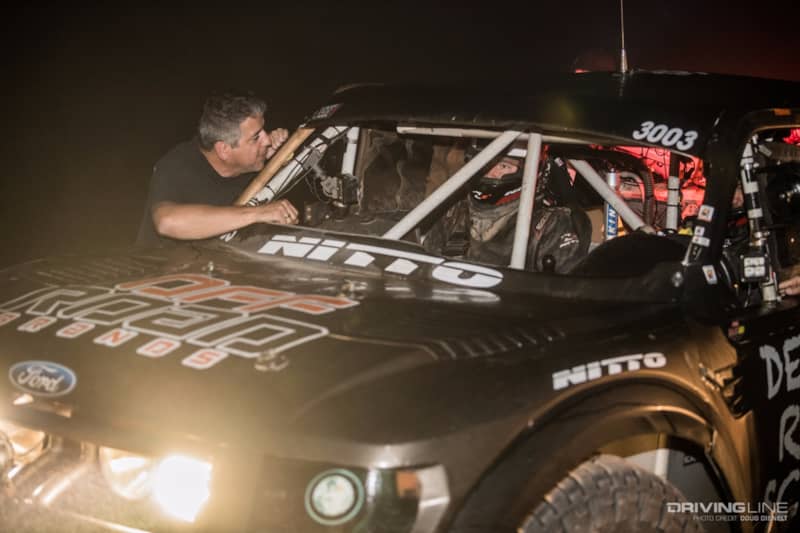
But just as Loren and Chris began to pick up speed again, disaster struck. The BajaLite’s transmission was heating up fast, and beginning to slip. Without a spare transmission, this proved to be a race-ender for the Desert Race School team. The 3003 car was pulled to the highway and towed into San Ignacio, where the chase team began tearing it down in the parking lot of a local hotel (evidently called Rice and Beans). The sun had rose over the 300 year-old Mission San Ignacio, and hours passed before the transmission problem became evident. A pump seal had failed, causing the transmission to overheat and eventually fail. With no way to repair the issue, the decision was made by Ron Stobaugh to pull his team out of the 50th Baja 1000.
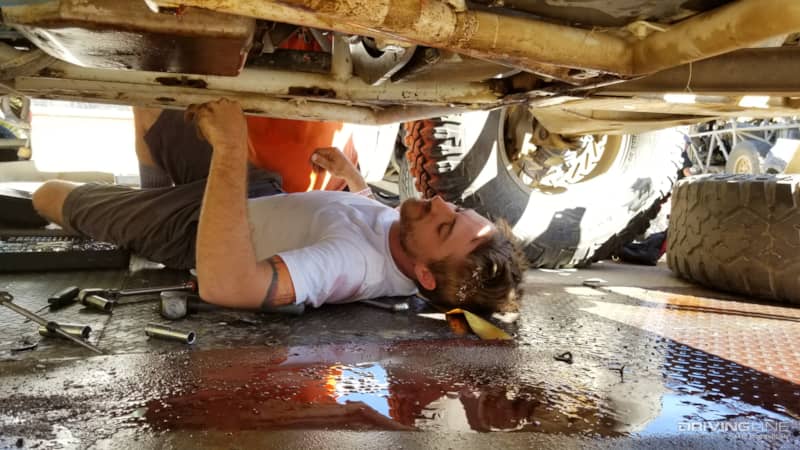
Emotions come heavy in times like these. Months of prep and planning, hard labor, thousands of miles of prerunning and countless hours of wrenching all came to a screeching halt because of a faulty pump seal. The feeling is familiar around Baja racing, because simply finishing this race is an accomplishment. Although upset at the circumstances, the Desert Race School team knew they gave this race everything they had. It was time to get some rest and prepare for the 2-day drive back to the US-border.
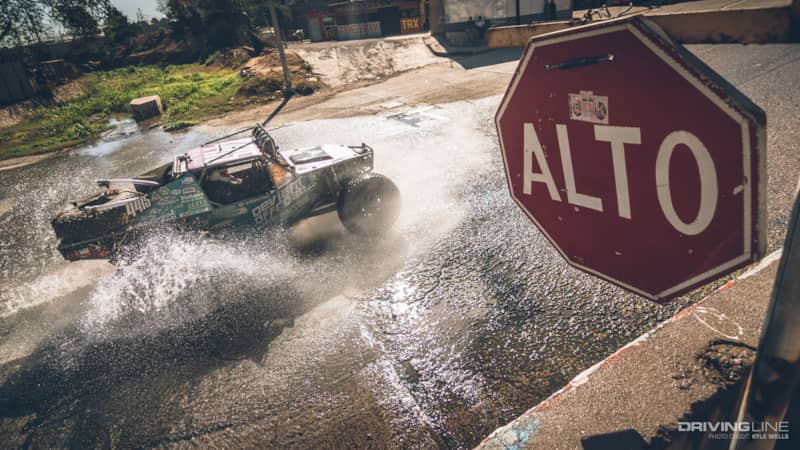
But theirs wasn’t the only team that had to accept defeat before crossing the finish line. By the time the dust had settled, just 205 teams out of over 400 entered would finish the race, leaving the other half of the teams broken down and sprawled out along the Baja peninsula. The first overall finisher in La Paz was Mexican Trophy Truck driver Carlos “Apdaly” Lopez, finishing the race in 19 hours and 53 minutes, a full hour ahead of Cameron Steele, who took 2nd place overall.
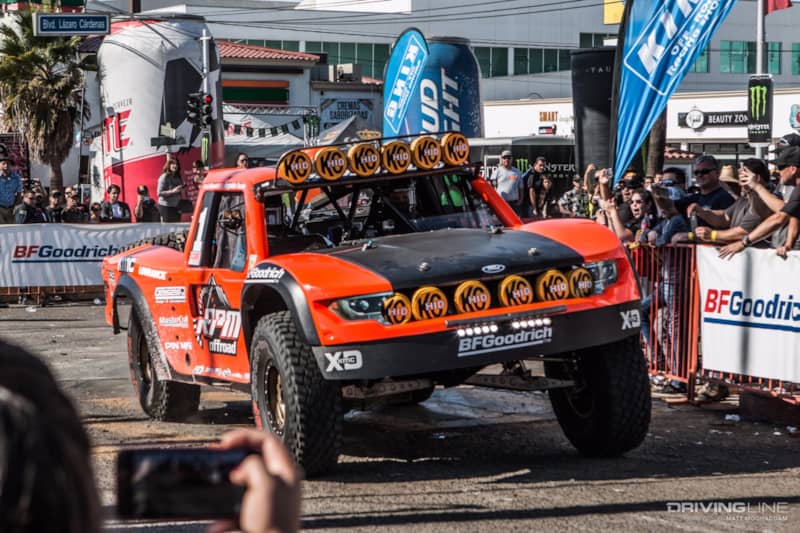
Still, there was a silver lining for the Unlimited Hammer Truck class. Dave Cole and his brand new 4454 Ultra 4 racer crossed the finish line in 2nd place, just 2 hours behind Casey Currie. Although Dave’s race car had not previously been raced or tested in Baja, it proved worthy of the 1,130-mile-long race course.
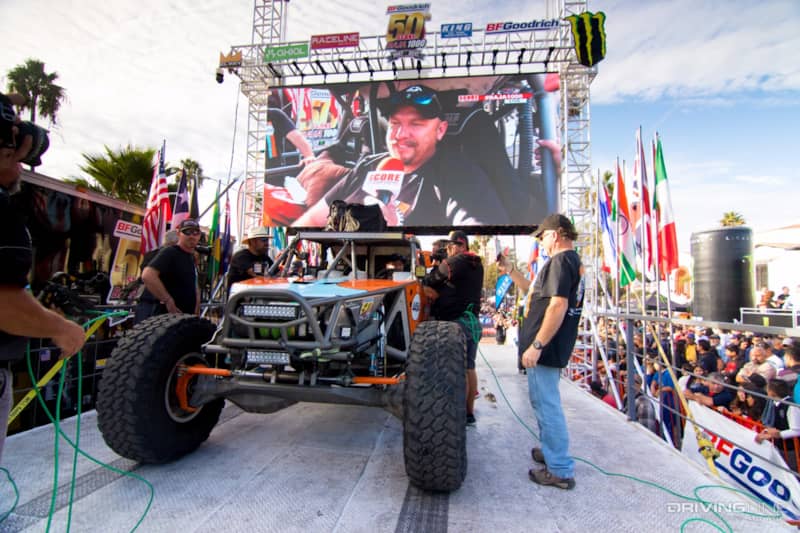
The story of Baja is different for everyone, but after hearing a few of them, you begin to notice something. They all seem to have the same flow. The situations are never stagnant; things are always looking up immediately followed by disaster, but then everything works out just in the nick of time before turning to complete chaos again. “Baja Magic”, as told by veteran desert racers, is the all-seeing, all-knowing force that keeps the balance between everything, and it’s not argued with. The outcomes of each race are simply a product of that balance, both good and bad.
“That’s Baja” is a phrase everyone seems to know and understand. Whether you’re a racer, chase supporter, a local race fan, or just the media guy, the spirit of Baja becomes a part of you down there. And although the 50th Baja 1000 ended in heartbreak for many who didn’t deserve it, that spirit will undoubtedly call once again, daring those who are willing to return for their chance at glory.
